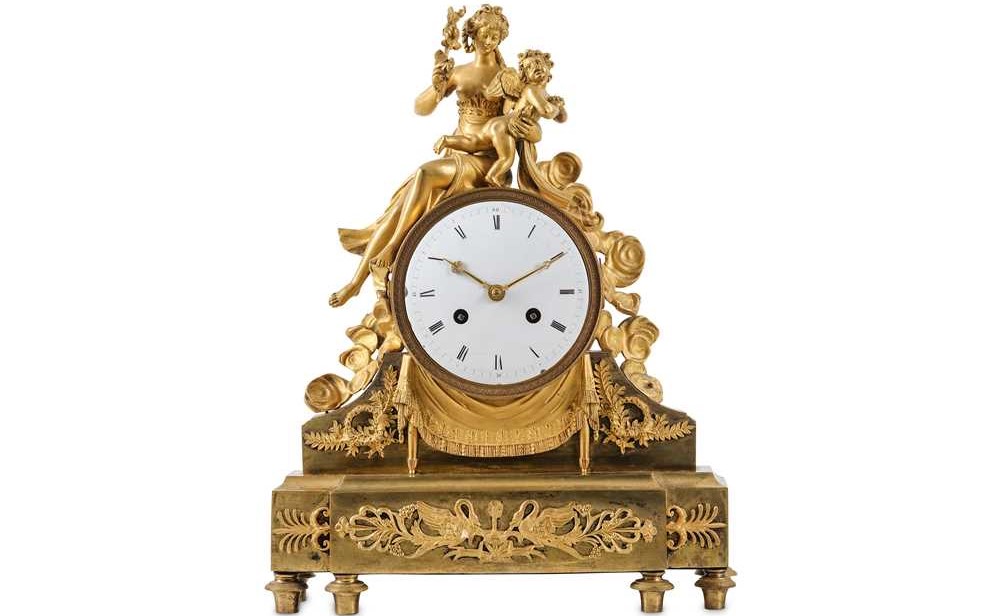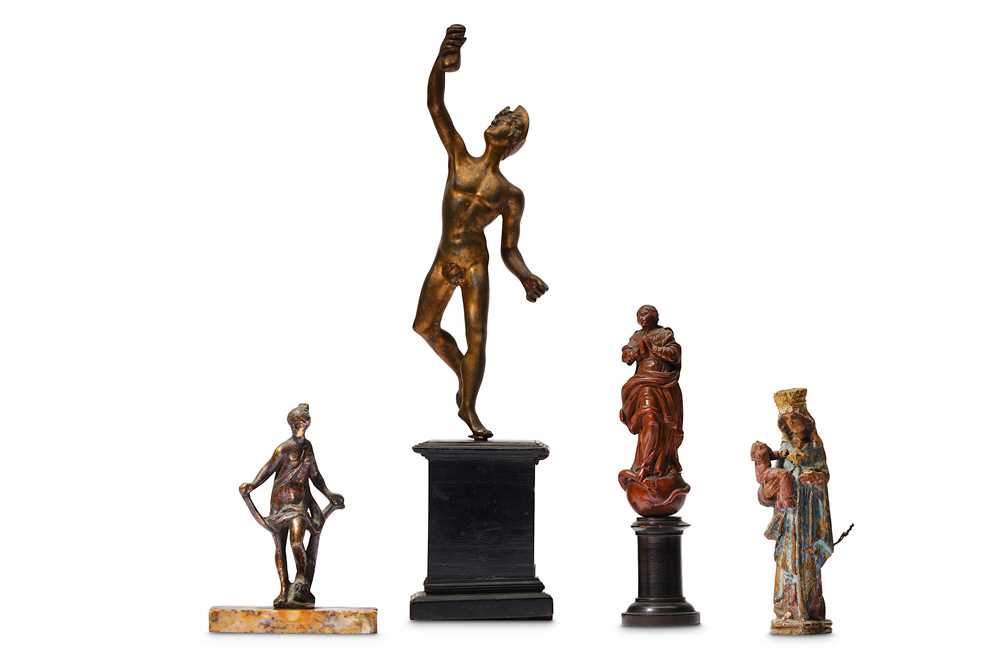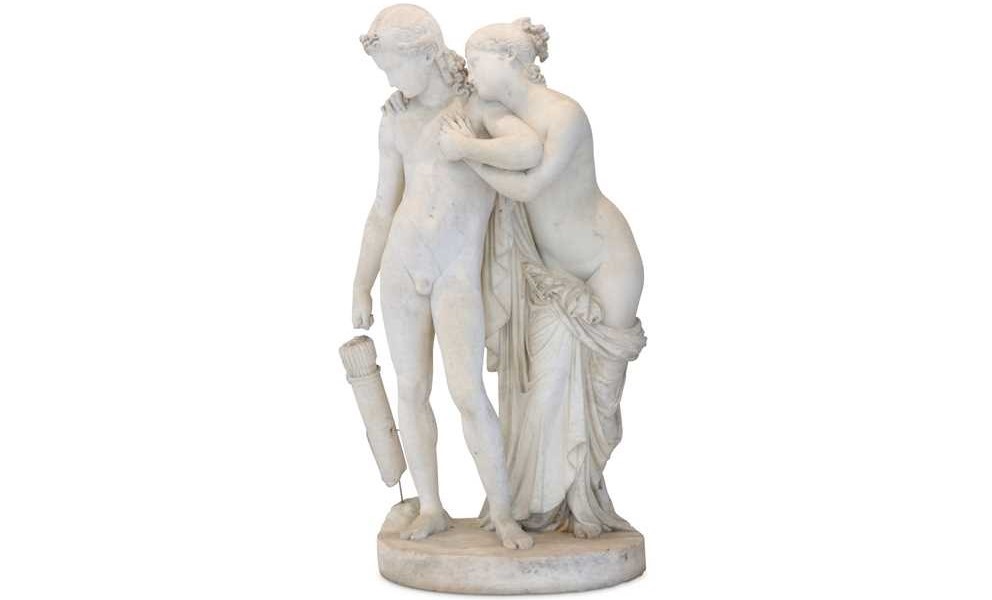Classical Sculptures of Venus: Erotic Art in Bronze and Marble
Venus, the Roman goddess of love, sex and beauty, is arguably the most widely depicted female subject in European sculpture after the Virgin Mary. Unlike Mary, often veiled in heavy folds of drapery, Venus appears nude or semi-nude in delicate robes. The subject allowed sculptors to transform hard materials like marble, alabaster or bronze into sensuous, lifelike forms, giving the illusion of soft flesh and inviting tactility. As the goddess of sexuality, her nudity was considered natural and acceptable, even desirable, offering sculptors permission to explore more erotic forms in a culturally sanctioned way.
This 17th-century gilt-bronze statuette of Venus is typical of late Renaissance and early Baroque sculpture. Though loosely based on classical prototypes, her pose is more dynamic and animated, echoing the influence of Mannerist sculptors like Giambologna. Such small-scale bronzes were often designed to decorate furniture, desk items or architectural features. Where religious statuettes had their place in private devotion, figures like Venus adorned the domestic spaces of the affluent, suggesting education, taste and wealth
A 17th century gilt-bronze figure of Venus with a dolphin together with three further figures, 12 December 2019. sold for £300 incl. Buyer's Premium.
By the late 18th century, the Neoclassical style brought a renewed interest in antique sculpture. Figures of Venus became more serene, static and idealised in proportion, mirroring the aesthetics of ancient Greece and Rome. These sculptures decorated clocks, inkstands, wall appliqués and furniture, made in bronze, marble, wood and other media. One striking example is the bronze figure of Venus Callipyge, after a Roman marble of the same name. Lifting her robe to reveal her buttocks, the sculpture toes the line between classical homage and deliberate eroticism, an effect legitimised by its mythological subject.

A fine early 19th century French empire period bronze figure of the Venus Callipyge, after the antique, 12 December 2019. Sold for £5,500 incl. Buyer's Premium.
In early 19th-century France, classical themes reached their peak popularity during the Empire period. A gilt bronze mantel clock from around 1810 playfully depicts Venus chastising Cupid with a sprig of roses, her gown slipping to expose her breasts. The classical restraint of the clock's form is offset by the whimsical and erotic narrative of the figures, an embodiment of love, beauty and playful punishment.

A fine and rare French empire period gilt bronze figural mantel clock depicting the punishment of cupid, circa 1810, 12 June 2019. Sold for £2,200 incl. Buyer's Premium.
Another grand example from this period is a Neoclassical marble sculpture of Venus and Adonis, dating to around 1820. In this dramatic composition, Venus clings to Adonis as he prepares to leave for the hunt. Her body is partially draped, yet exposed enough to heighten the emotional and sensual charge of the moment. The sculpture captures a fleeting narrative drawn from Ovid’s Metamorphoses, where Venus, struck by Cupid’s arrow, falls deeply in love, only to later lose Adonis to a wild boar. The influence of Canova and Thorvaldsen is unmistakable in the graceful form, technical skill and storytelling on display.
An important early 19th century neo-classical marble group of Venus and Adonis, circa 1820, 5 December 2018. Sold for £17,000 incl. Buyer's Premium.
These sculptural interpretations of Venus span centuries and styles, but they are united in their ability to channel emotion, sensuality and divine femininity through form. From small cabinet bronzes to monumental marbles, these works offered, and continue to offer, an invitation to admire the skill of the sculptor and the allure of their muse.
Own a sculpture or decorative work and would like to know more about its history or value?
Contact our Interiors, Homes & Antiques department for a free and confidential valuation, or submit an enquiry via our online valuation form.

